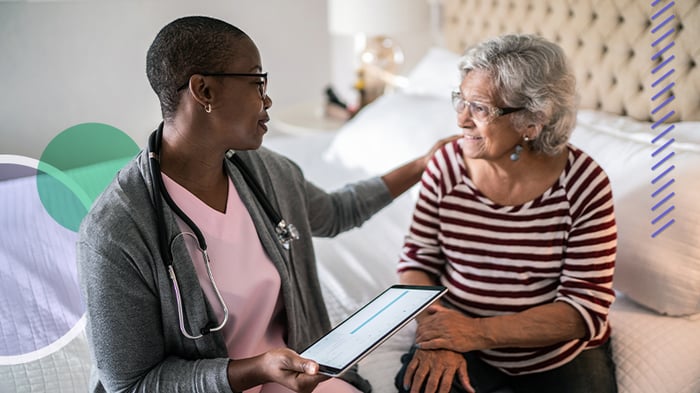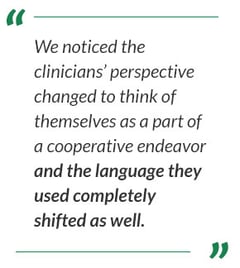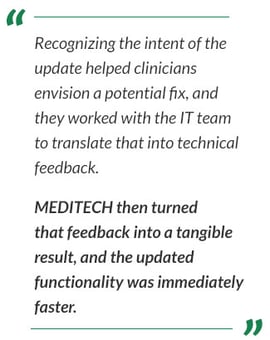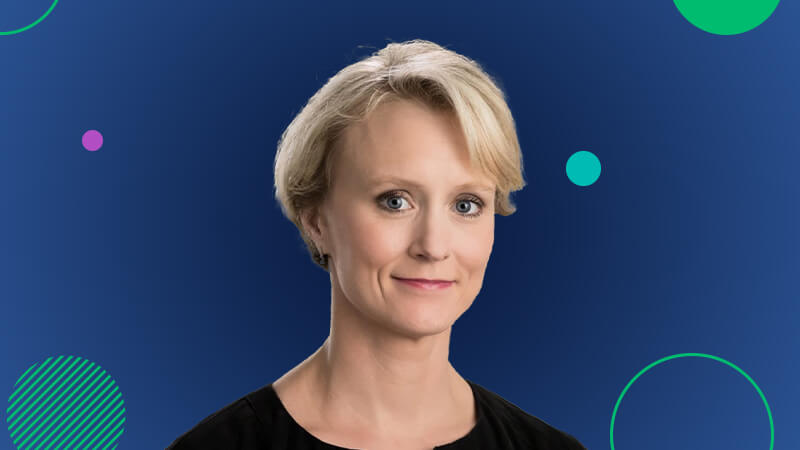
In 2019, our organization, Stillwater Medical Center, began our early adopter journey for MEDITECH’s 2.8 Home Care update.
The update featured improvements on the clinical documentation and private duty functions, plus a highly anticipated upgrade on field categorization. With 2.8, clinicians use what MEDITECH calls fact tailoring, a way to optimize documentation choices, to adjust the workflow to their preferences, eliminating unnecessary fields for faster navigation.
As an agency fortunate enough to be part of a hospital system with a robust IT department, we knew this opportunity would be productive for both our team and MEDITECH. Early adopter programs allow clinicians and IT to establish a more collaborative relationship and create an opportunity for open dialogue.
So what are all the benefits attributed to being an early adopter?
Improve communication with the IT team
For many businesses, the communication between employees and the IT team boils down to reporting issues, which sets up an unconscious, negative precedent. Healthcare organizations are no different and sometimes even more strained when technology becomes a barrier to life saving care. To improve that communication, a better understanding requires being open to learning, and becoming an early adopter offers prime opportunity for collaboration.
 When clinicians are exposed to the conversations between IT and the EHR vendor, they’re given a closer look at the limitations and capabilities of software development. Outside of the technical profession, the normal beta process can appear counterintuitive: testing and trying to break the software in order to improve it. By being a part of that system, clinicians are enlightened to how software evolves. As a result, we noticed the clinicians’ perspective changed to think of themselves as a part of a cooperative endeavor, and the language they used completely shifted as well. They were more open to participating in tests with our team, and their reports included more narrative such as screenshots and previous actions that led to the glitch, helping the IT team troubleshoot more efficiently.
When clinicians are exposed to the conversations between IT and the EHR vendor, they’re given a closer look at the limitations and capabilities of software development. Outside of the technical profession, the normal beta process can appear counterintuitive: testing and trying to break the software in order to improve it. By being a part of that system, clinicians are enlightened to how software evolves. As a result, we noticed the clinicians’ perspective changed to think of themselves as a part of a cooperative endeavor, and the language they used completely shifted as well. They were more open to participating in tests with our team, and their reports included more narrative such as screenshots and previous actions that led to the glitch, helping the IT team troubleshoot more efficiently.
Allow clinicians more control over their workflow
With documentation being a common pain point for burnout, having direct influence over the development of their EHR empowers clinicians in a revolutionary way. For example, while testing  the 2.8 Home Care update, our clinicians were initially excited for a two-view feature, splitting the screen between the working page and viewing notes. The functionality worked perfectly in testing, however, it ended up visually confusing the clinicians. Conceptually it made sense but functionally it slowed the clinicians down.
the 2.8 Home Care update, our clinicians were initially excited for a two-view feature, splitting the screen between the working page and viewing notes. The functionality worked perfectly in testing, however, it ended up visually confusing the clinicians. Conceptually it made sense but functionally it slowed the clinicians down.
Recognizing the intent of the update helped the clinicians envision a potential fix, and they worked with the IT team to translate that into technical feedback. MEDITECH then turned that feedback into a tangible result, and the updated functionality was immediately faster. The clinicians knew they were given a voice in the early adopter process, but this tangible change cemented how the end user’s needs are a priority. With the power to influence how their EHR functions, clinicians have more confidence over their own documentation.
Establish trust with your EHR vendor
Documentation will always be a necessity of healthcare, but it’s easy to get overwhelmed due to how regulations can complicate workflows. A lot of the time, that frustration then extends to the EHR vendor, as an abstract company representing that piece of technology. By being in direct contact with our vendor during the early adopter process, however, the faceless company morphs into a team of specialists ready to listen.
Clinicians realized that the development team was truly a partner with them, and MEDITECH was trying to make their day-to-day duties easier. A common complaint beforehand was about not understanding the relationship between hospital and vendor, and the limitations when issues arose. Now, that mindset shifted as they realized there will always be hurdles to overcome, but the right people are willing to work for a solution.
The results
At the end of the day, it’s about how the end user can utilize the software to its full potential, which then hopefully reduces the cognitive burden on staff.
After implementing the updates into the workflow and giving clinicians time to familiarize themselves with it, we found the average length of visits remained the same even as the average number of fields being documented increased from 30 to 34 after a year. That shows us that clinicians were able to address more concerns during the same amount of time with their patients. The same conclusion occurred for post visits at an accelerated rate. The average length of time decreased even as the average number of fields documented rose from 50 to nearly 200, a testament to how much easier documentation became. Overall, this shows that our clinicians were becoming more efficient as the result of the improvements made to the software — improvements that they participated in developing.
All in all, participating in an early adopter program is a worthwhile effort. Different experiences offer new solutions, and those are essential in the beta stages. Our problem solving is limited based on our creativity and expertise, but merging clinical and technical standpoints can improve the experience for everyone. If you have the IT support and a willingness to learn, there’s a wealth of knowledge to be gained as an early adopter, and I encourage other organizations to consider it.
Learn more about home health solutions and subscribe to the MEDITECH podcast for pivotal insights.




